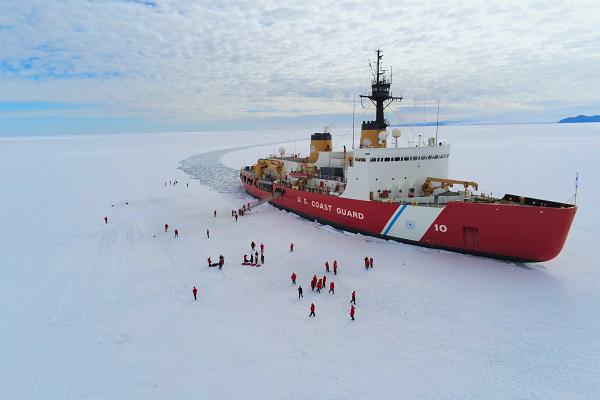
McMurdo Sound, Antarctica. (February 1, 2025): It may not be everyone’s idea of a day at the beach, but these Coast Guard members eagerly soak up the Antarctic sun. In this photo by Petty Officer 2nd Class Jeremy Burgess, the crew of the Coast Guard Cutter Polar Star enjoys ice liberty during Operation Deep Freeze. The operation is an annual mission on behalf of the U.S. Antarctic Program to resupply outposts in the Antarctic. The Polar Star and crew operate America’s only heavy ice breaker, making them essential to U.S. research efforts at the bottom of the world.
In 1959, the U.S. and eleven other countries signed the Antarctic Treaty ensuring that the region is dedicated “solely to peaceful purposes and free from international conflict”. The United States has established three bases, McMurdo, Amundsen-Scott, and Palmer as year round research facilities.
Ninety eight percent of Antarctica is covered in ice with winter temperatures reaching 112 degrees below zero. This remote region is plagued by sudden storms making transporting supplies by air impossible. Each year, the Polar Star cuts a navigable path through ice as thick as 21-feet to allow safe passage to McMurdo Sound, the logistics base for the program.
Managed by the National Science Foundation, McMurdo Station facilitates approximately five hundred scientists conducting research, especially during the summer months (October through February). Antarctica's extreme environment and isolation make it a prime location for unique research disciplines, including astronomy, atmospheric sciences, biology, earth science, environmental science, geology, glaciology, marine biology, and oceanography.
Homeported in Seattle, the Polar Star was commissioned in 1976 and remains the most powerful ship in the Coast Guard. Crewed by eighteen officers and one hundred and twenty-seven enlisted, the Polar Star will soon to be replaced by the Polar Security Cutter, the first heavy icebreaker built by an American shipyard in more than 50 years.


